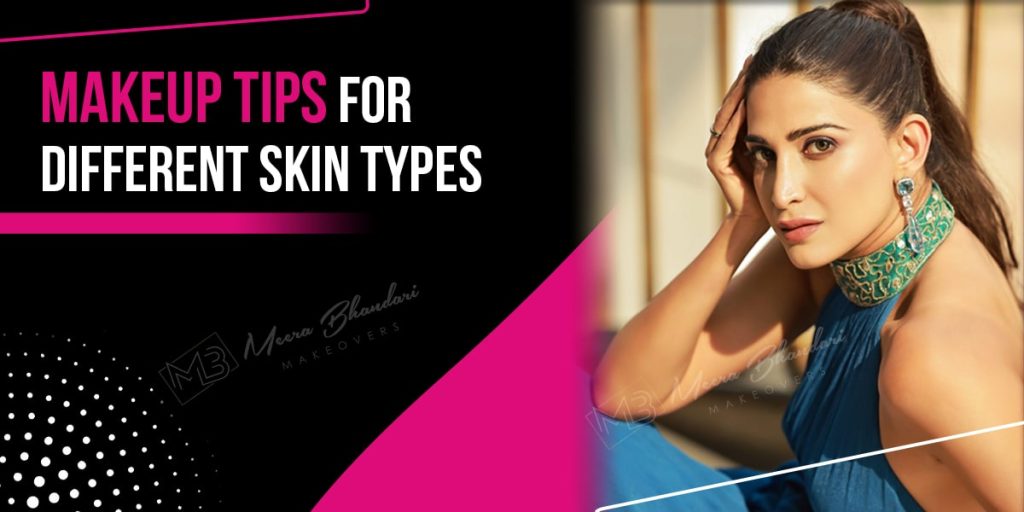When it comes to makeup, understanding your skin type is crucial for achieving a flawless look that lasts all day. Different skin types—whether oily, dry, combination, or sensitive—require specific products and techniques to enhance natural beauty. For oily skin, lightweight, mattifying formulas help control shine, while dry skin benefits from hydrating and creamy products that provide moisture. Combination skin calls for a balanced approach, using varied products on different face areas. Meanwhile, sensitive skin demands gentle formulations that minimize irritation. By tailoring your makeup routine to your skin type, you can enhance your features and feel confident in your skin.
How to Identify Different Skin Types
Identifying your skin type is an essential step in developing an effective skincare and makeup routine. Here are some simple methods to help you determine your skin type:
- The Bare-Faced Test: Start by washing your face with a gentle cleanser to remove any makeup, dirt, and oil. Pat your skin dry with a clean towel and leave it bare for about an hour. Observe how your skin feels:
- Oily Skin: If your skin appears shiny and feels greasy, especially on the forehead, nose, and chin (the T-zone), you likely have oily skin.
- Dry Skin: If your skin feels tight, rough, or flaky, and lacks moisture, you may have dry skin.
- Combination Skin: If you notice oiliness in the T-zone but dryness or flakiness in other areas, your skin is likely a combination.
- Sensitive Skin: If your skin reacts easily to products, and experiences redness, irritation, or itchiness, you may have sensitive skin.
- Blotting Sheet Method: Use a blotting sheet to assess oil levels on your skin:
- Press a blotting paper on different areas of your face. If the sheet picks up oil from the T-zone (forehead, nose, chin) but not from the cheeks, you likely have combination skin. If it collects oil from all areas, you have oily skin. If little to no oil is present, you probably have dry skin.
- The 30-Minute Test: After washing your face, wait for 30 minutes without applying any products. Then, evaluate your skin:
- Oily: Shiny appearance and greasy feel.
- Dry: Tightness and possible flaking.
- Combination: Oily in the T-zone and dry on the cheeks.
- Sensitive: Redness or irritation after 30 minutes.
- Consult a Professional: If you’re still unsure, consider consulting a dermatologist or skincare professional who can provide personalized advice based on a thorough assessment of your skin.
Makeup Tips for Oily Skin
Makeup application for oily skin requires specific techniques and products to control shine and ensure long-lasting wear. Here are some effective makeup tips for achieving a flawless look:
- Start with a Primer: Use an oil-free, mattifying primer to create a smooth canvas. This helps control excess oil and minimizes the appearance of pores, allowing your makeup to adhere better.
- Choose the Right Foundation: Opt for a matte or oil-free foundation that provides good coverage without adding extra shine. Look for formulas labeled as “long-wear” or “matte finish.” A lightweight, powder foundation can also work well for oily skin.
- Use a Setting Powder: After applying foundation, dust a translucent setting powder over your face, focusing on the T-zone. This helps absorb excess oil and set your makeup for the day. Reapply throughout the day as needed.
- Blotting Papers Are Your Friend: Keep blotting papers handy to absorb excess oil without disturbing your makeup. Gently press them onto shiny areas throughout the day for a fresh look.
- Avoid Cream Products: Stick to powder formulas for blush and bronzer, as cream products can add unwanted shine. A matte blush will help create a natural flush without emphasizing oiliness.
- Use Waterproof Products: For eyeliner and mascara, choose waterproof formulas to prevent smudging and running due to oil. This ensures your eye makeup stays in place all day.
- Finish with a Setting Spray: A mattifying setting spray can help lock your makeup in place and control shine. Spray it on your face after applying all your makeup for a long-lasting finish.
- Regular Touch-Ups: Keep an oil-absorbing powder or compact in your bag for quick touch-ups throughout the day. This helps maintain a matte finish and keeps your makeup looking fresh.
You can read also:- Gorgeous Indian Bridal Hairstyles That Work for Every Bride
Makeup Tips for Normal Skin
Normal skin is balanced, with no excess oil or dryness, making it relatively easy to work with. Here are some tips to enhance your natural beauty:
- Hydrate: Start with a lightweight moisturizer to maintain hydration without making your skin greasy. Look for a product that suits your preferences, such as gel-based or cream formulations.
- Foundation Choice: You can experiment with various foundation types, including liquid, cream, or powder. A satin finish foundation works well to provide a natural glow without excess shine.
- Highlighting and Blush: Feel free to use both cream and powder products for blush and highlighter. Cream products can give a dewy look, while powders can be used for a more matte finish.
- Setting Powder: Lightly dust a translucent setting powder only on areas where you may get shiny, like the T-zone, to keep your makeup in place without looking cakey.
- Setting Spray: Finish with a setting spray to lock in your makeup and give it a fresh, natural finish. A hydrating or illuminating spray works well for normal skin.
Makeup Tips for Dry Skin
For dry skin, the focus should be on hydration and creating a dewy, radiant finish. Here are some essential tips:
- Prepping the Skin: Begin with a rich moisturizer to hydrate your skin. Look for ingredients like hyaluronic acid or glycerin to lock in moisture.
- Use a Hydrating Primer: Opt for a hydrating primer that adds moisture and creates a smooth base for your foundation. This helps your makeup glide on more easily.
- Foundation Selection: Choose a liquid or cream foundation with a dewy finish to add luminosity. Avoid matte formulas, as they can emphasize dryness and flakiness.
- Cream Products: Use cream blush and bronzer to add warmth and hydration to your cheeks. These products blend easily and help achieve a natural glow.
- Setting Powder: If you need to set your makeup, use a light dusting of a hydrating setting powder, focusing only on areas prone to creasing or settling into fine lines.
- Setting Spray: Finish with a hydrating setting spray to lock in moisture and give your makeup a fresh, dewy look throughout the day.
Makeup Tips for Combination Skin
Combination skin requires a tailored approach to address both oily and dry areas. Here’s how to balance your makeup:
- Moisturizer: Use a lightweight, oil-free moisturizer on the oily areas and a more nourishing one on the dry spots. This ensures balanced hydration.
- Primer Strategy: Apply a mattifying primer on your T-zone and a hydrating primer on the drier areas. This helps control shine while keeping your skin moisturized.
- Foundation Selection: Look for a foundation that offers a natural finish, ideally one that is long-wearing and can control oil without drying out the skin. A liquid foundation with buildable coverage works well.
- Targeted Products: Use powder blush and bronzer to avoid excess shine on the T-zone while opting for cream products on drier areas for added hydration.
- Setting Powder: Apply a translucent setting powder to the oily areas to control shine, avoiding heavy application on the drier spots.
- Touch-Ups: Keep blotting papers handy for quick touch-ups throughout the day, and consider a setting spray that balances moisture and mattifies.
Makeup Tips for Sensitive Skin
Sensitive skin requires gentle care and specific product choices to avoid irritation. Here are some tips for applying makeup:
- Gentle Cleansing: Start with a mild, fragrance-free cleanser to remove impurities without irritating the skin.
- Hydrating Primer: Use a soothing, fragrance-free primer to create a smooth base. Look for products with calming ingredients like aloe vera or chamomile.
- Foundation Choice: Opt for a mineral-based or hypoallergenic foundation that is free of harsh chemicals and fragrances. A lightweight, liquid foundation is ideal for even coverage.
- Avoid Heavy Makeup: Stick to lighter coverage and avoid layering too many products, as this can overwhelm sensitive skin. A tinted moisturizer can be a great alternative.
- Gentle Application: Use clean brushes or sponges to apply makeup, and avoid pressing too hard on the skin to prevent irritation.
- Setting Products: Choose a mineral-setting powder or spray that is formulated for sensitive skin to avoid breakouts or irritation.
- Patch Testing: Always patch-test new products before applying them to your entire face to ensure they don’t cause an adverse reaction.
Conclusion
In conclusion, understanding your skin type is crucial for achieving a flawless makeup look. Whether your skin is oily, dry, combination, or sensitive, tailored techniques and product choices can enhance natural beauty. For expert guidance and skill refinement, Mera Bhandari Makeovers, Jaipur is the premier makeup academy and artistry destination. Their talented artists provide personalized skincare and makeup solutions to help you achieve your desired look while keeping your skin healthy and radiant. Embrace your beauty journey with the support of Mera Bhandari Makeovers.



